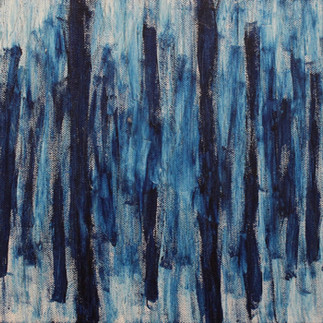Abstracted Landscapes
- David Joyner
- Jun 13, 2023
- 2 min read
Updated: Jun 13, 2023
In the 18th century Edmund Burke wrote a treatise On the Sublime and Beautiful, which for the first time separated out these terms. Though somewhat incomplete, Burke sought to define or clarify our response to what we see. When I was about sixteen I stood on the shore of Lake Pontchartrain watching a waterspout. The sky was black. My ears were popping from the pressure, and the hair on my body was charged and standing on end. By contrast, I remember walking with my grandfather surveying timberland around Kiln Mississippi. As we traversed a stand of mature pine trees, we came upon a lower more boggy patch filled with wild flowers and pitcher plants. The air was thick with moisture and the light was diffused. "Do you see it the way I see it?" My grandfather asked. "Yes." I replied. The Romantic painters like Constable and Friederich hoped to capture the physical but also the emotional and spiritual. Scaping or marking out what will be shown in a painting is as much about conveying psychological responses to physical stimuli as it is about matching or approximating the colors of a sunset. Mark Rothko's colorfield paintings are ultimately about conveying that energy or aura that we experience in the natural world, but without specific reference. The viewer brings experiences and memories. Also, they can be either open or closed to those experiences.
My paintings and drawings are as much about the traditions of landscape painting as abstraction. I am primarily a studio painter. I prefer plein air of the mind. Memories of pine trees, pitcher plants, and waterspouts permeate my thoughts as I experiment with mark, color, format, and compositions. I use archetypical forms and motifs to evoke a space or explore an imagined vista.


















Comentarios